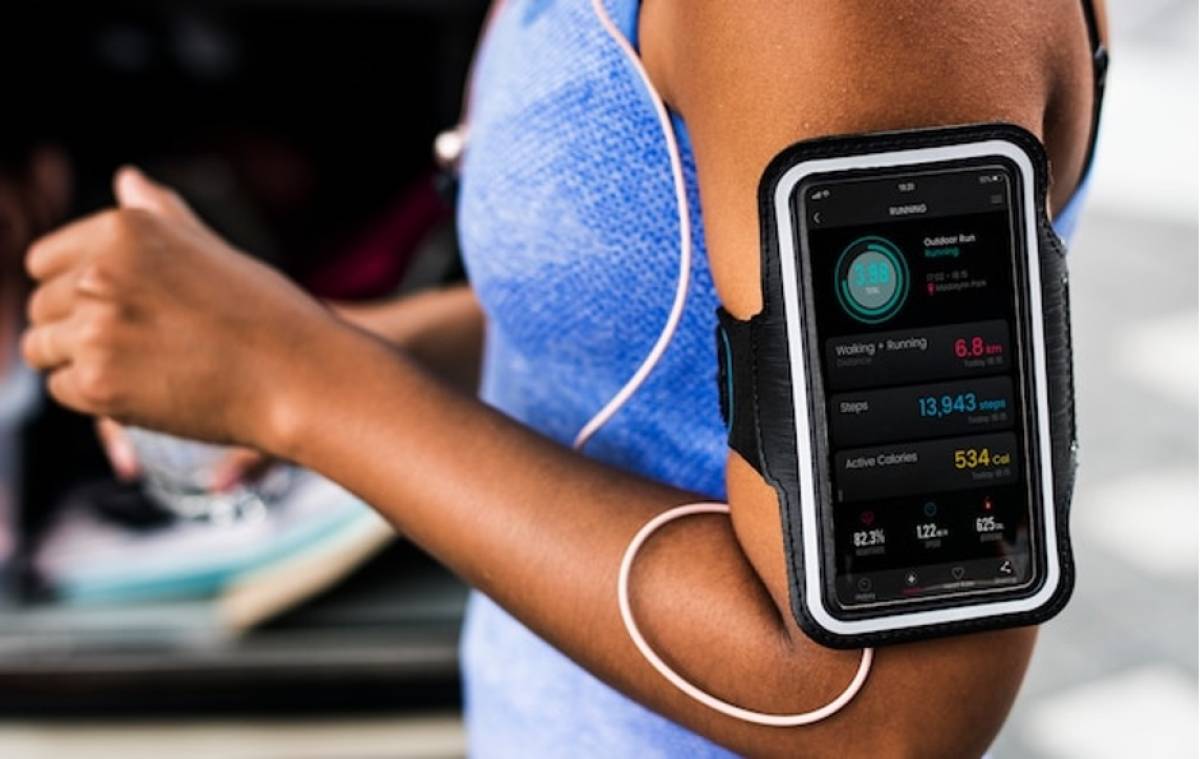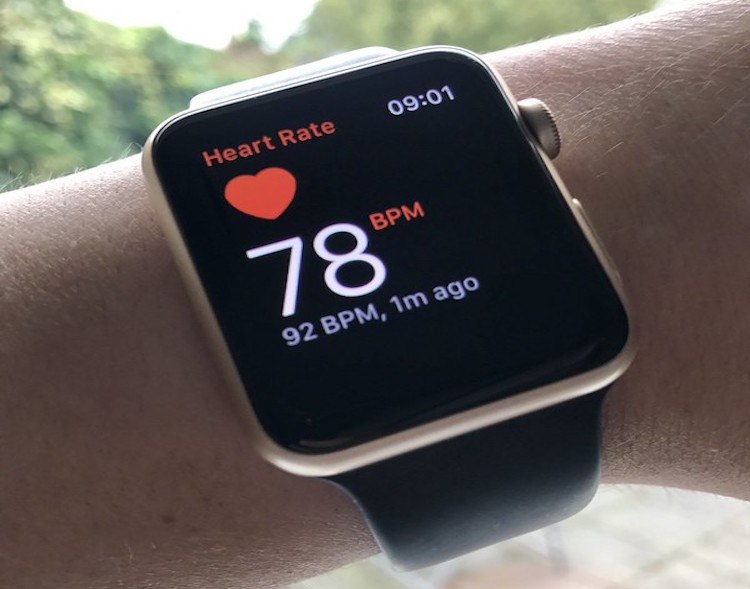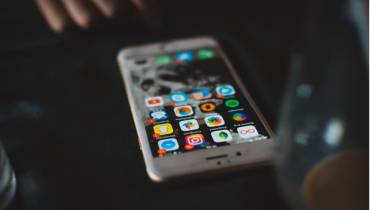Tracking Health & Wellness in Real-Time: The Place of Wearable Tech

Wearable technology can be found in everything these days from clothing to sports equipment and medical devices.
As the number of wearable devices on the market continues to grow, healthcare providers and payers need to understand how these devices work and can be integrated into care delivery systems.
In this article, we'll look at how wearable technology is being used in healthcare settings, and how it could impact the industry over time.
Defining Wearable Technology
Wearable technology is a term used to describe devices that are worn on the body. These devices can be used to monitor and track health and wellness. The phrase describes devices and apps that you wear, rather than carry.
Wearable’s fall under the broader technology category of body-worn devices (BWDs), which include items such as smart watches, fitness trackers, and other similar products. This category of products has been around for decades, but it didn't start to gain widespread adoption until the early 2010s.
Rise of Wearable Technology in Healthcare
Wearable technology is a rapidly growing industry in the healthcare sector that can help improve patient outcomes, reduce costs, and keep patients engaged with their healthcare.
A study published in JAMA Internal Medicine, for example, found that using an activity monitor (such as Fit bit) was associated with an average weight loss of 7 pounds over six months compared with those who did not use one at all during this period.
The study also showed that participants who wore their trackers consistently lost more weight than those who had sporadic use of them or stopped wearing them altogether after several weeks or months. Thus, the use of wearable technology in healthcare has many benefits. It can help improve patient outcomes and reduce costs, while also enhancing patient engagement.
However, there are some challenges that must be addressed before widespread adoption of this technology is possible.
Challenges of Wearable Technology in Healthcare
Privacy and security concerns around the use of wearable devices are still a barrier to adoption in many organizations, but they can be addressed through policies that address data ownership, consent for collection and use of data, encryption measures for storing sensitive information such as passwords or private conversations between clinicians, etcetera. This is where new legislation such as GDPR comes into play.
Data accuracy and reliability is another area where there has been some debate around whether wearable provide accurate measurements compared with traditional methods such as lab tests or physical examinations by doctors/nurses, etcetera. However, there's no doubt that they produce valuable insight into our health which we wouldn't otherwise have access too.
So, let's not underestimate the potential impact of wearables on improving patient outcomes. They provide real-time feedback on what's happening inside your body so you know how well (or poorly) you're doing on a day-to-day basis!
Applications of Wearable Technology in Healthcare

Some of the main applications of wearable devices that are changing healthcare sector include:
1. Tracking health and wellness in real-time
Wearable technology has the ability to track health and wellness in real-time. It can provide users with information on their physical activity, sleep patterns, vital signs, chronic conditions, and more to help them with their disease management or prevention as well as medication management.
Wearable devices are also able to track your location so you know where you are at all times. This makes it easy for emergency personnel to find you if there is an accident or other emergency situation that requires immediate attention from emergency medical services (EMS).
2. Monitoring vital signs
Wearable technology can be used to monitor vital signs, such as heart rate, blood pressure and oxygen saturation. This information can help you understand how your body is responding to different activities or situations.
Heart rate monitors are one example of wearable tech that can help you track your health by measuring the number of times your heart beats per minute.
Heart rate variability (HRV) refers to changes in this number over time; it's thought that people with higher HRV may have better cardiovascular fitness because they are able to respond more effectively during stressful situations than those with lower HRV scores
3. Tracking physical activity
When you're trying to get fit, it's easy to get discouraged by the scale or mirror. But wearable technology can help you stay on track by showing how much activity you've done each day. The Fit bit Charge 3, for example, has a feature called "Reminders to Move" that vibrates when you've been sitting too long and encourages users to move around for a few minutes.
Some fitness trackers even allow users who grant them access to their data to share their data with others through an app or website, so that others can see how active their loved ones are at any given moment! This kind of information sharing can also help motivate people who may not otherwise be interested in tracking their health stats regularly.
4. Monitoring sleep patterns
Sleep tracking apps are a great way to monitor your sleep patterns and help you develop better sleep habits. These apps can also be used to improve overall health by helping you identify any potential health issues, such as sleep apnea or restless leg syndrome, which may be causing you to experience difficulties falling asleep.
Some examples of popular sleep tracking apps include:
- Sleep Cycle
- Sleep as Android, and
- Bedtime Math Game (for kids).
5. Disease management and prevention
Wearable technology can help patients manage their disease and stay healthy. By monitoring their health in real-time, wearable devices can alert them to any health concerns. For example, if you have diabetes and your blood sugar is too high, a wearable device may detect this and send an alert to your doctor or nurse so they can provide assistance before things get out of control.
Another way that wearable devices are changing healthcare is through medication management. Some wearable will give reminders when it's time for a patient to take their medicine so they don't forget (or accidentally take too much). If a patient has trouble remembering what time they took their pills last week or even yesterday morning, this feature could be extremely useful!
6. Monitoring chronic conditions
Wearable technology has the potential to help individuals monitor chronic conditions and improve wellness. Chronic conditions such as diabetes, hypertension, and asthma can be managed by tracking vital signs such as blood pressure, heart rate and body temperature in real time.
Wearable devices can also track physical activity levels, sleep patterns, medication adherence and other factors that can affect health outcomes.
7. Early detection of diseases
Wearable technology can help you detect diseases earlier, and it can also help you manage your disease better.
By monitoring your health and wellness in real-time, wearable devices can alert you when there is an issue with your body or even tell you when to see a doctor. This can save lives by catching problems before they become serious, but it's also important for people who already have chronic conditions like diabetes or epilepsy because wearables allow them to monitor their conditions independently without having to rely on someone else for help.
Wearables are especially helpful for patients who are living with chronic illnesses that require constant monitoring. These people may not always have access to a doctor (especially if they live far away from urban centers) so it's helpful if the data collected by their wearable devices is easily accessible by medical professionals through apps like My Vitals or Health Tap MD.
8. Medication management
Medication management is important aspect of health care. A patient may not be able to take their medications as prescribed, which can lead to dangerous side effects and even death in some cases.
Wearable technology allows patients to track their medication adherence through alerts, reminders, and feedback provided by the device itself. This allows doctors to better understand what’s going on with their patients’ treatment plans so they can make adjustments as needed or refer them back into treatment if necessary.
Medication adherence refers to whether or not someone has taken all of their medications at appropriate times throughout the day/week/month etc., while medication safety refers more specifically towards whether there are any risks associated with taking certain combinations together (i.e., taking an antidepressant along with cough syrup).
9. Reminder systems
Reminder systems are a popular use case for wearables. They can help track and remind users about the medications they need to take, when they need to exercise, how much sleep they’ve gotten each night, and much more.
Reminders can also be used to help people with chronic illnesses like diabetes or hypertension stay on top of their health goals. For example, if a patient has high blood pressure readings due to stress at work or school, he might forget his medication if he doesn’t have an automated reminder system set up on his wristband device (like this one).
10. Medication tracking
Medication tracking is another critical aspect of healthcare, as it can improve patient outcomes by increasing medication adherence.
A study conducted in 2016 found that patients who used wearable devices to track their medications were more likely to take their pills on time than those who didn't use such devices. The same was true for patients using mobile apps or other types of digital tools to track their medications.
In addition, these technologies have been shown to reduce hospital readmissions and emergency room visits by providing real-time alerts when patients miss doses or take them at inappropriate times during the day (for example, when they're asleep).
The technologies also help doctors identify potential interactions between drugs before they become dangerous—which could prevent harmful side effects from occurring down the road.
Key benefits of using wearable technology in healthcare
Some of the key benefits of adopting smart watches, fitness trackers, and other wearable technologies in the healthcare sector are:
1. Improved patient outcomes
The use of wearable technology in healthcare can improve patient outcomes, while also reducing healthcare costs.
Among the many ways wearable devices have been used to benefit patients are:
- Reduced hospital readmission rates - A decrease in hospital readmissions is one of the most important goals for any medical facility because it means fewer days spent in the hospital and less money spent on care. One study found that patients with chronic diseases who wore a Fit bit device as part of their treatment had lower odds of being readmitted than those who did not wear one (Nguyen et al., 2015).
- Improved patient compliance - Wearable devices can also help ensure that people stick with their prescribed treatments by tracking how often they take their medications or attend therapy sessions. This can be especially effective when paired with other technologies such as artificial intelligence-powered catboats that remind users when they need to take their next dose (Kholo et al., 2018).
2. Cost-effectiveness
Wearable technology has the potential to reduce costs by reducing the need for expensive diagnostic tests, as well as multiple visits to the doctor. It also helps reduce the need for expensive medication and medical devices, as well as hospital stays and surgeries.
3. Enhanced patient engagement
Wearable technology has the potential to enhance patient engagement in a variety of ways. Patients who have access to their health data through wearable’s are more likely to follow their doctor's orders, take their medication as prescribed and participate in their own healthcare overall.
A study published by Stanford University found that patients who used a wearable device were more likely than those without one to stick with their exercise program for at least six months (upwards of 80% vs. 50%). The same study also found that many participants felt more active and motivated after using the device than before they started using it.
Moreover, wearable technology can help improve medication adherence rates by providing real-time data about how often patients take their medications or consume dietary supplements.
In Conclusion
The future of wearable technology in healthcare looks bright. Wearables are becoming more common, with an estimated global shipments of wearables devices sold in 2022 standing at 492.1 million units. This year alone, the number of people using fitness trackers jumped from 27% to 33%.
With increased usage of wearable technology, healthcare providers can monitor patients' health in real-time, while patients can monitor their own vital signs (like blood pressure) at home on a regular basis. This kind of self-monitoring plays an important role in preventing chronic diseases like diabetes mellitus type 2 (DMII) and could save lives. It's also a cost-effective way of treating patients since it reduces unnecessary treatments and procedures due to misdiagnosis or delayed diagnosis.
As more people adopt wearable devices and begin using them regularly, there will be more opportunities for researchers to study how they impact daily life. The increased use will also give us more insights into what types of benefits users experience from wearing their tracking devices.





















![Live Simply and Reduce Carbon Footprint: 5 Ideas for Your New Tiny House [node:title]](/sites/default/files/styles/video_thumbnail_bottom/public/rob-greenfield-tiny-house-in-orlando.jpg?itok=Iy7NKIYY)
